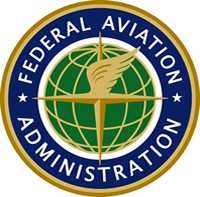Mon, Nov 03, 2014
The Term Ultralight In The U.S. Means Something Different From The Same Term Used In Some Other Countries
The term light sport aircraft (LSA) is reserved for U.S. certification, but the term ultralight is used for a similar airplane in many other countries. That’s why it’s not uncommon to see a foreign manufacturer’s website use the term ultralight when referring to an LSA being offered in the U.S.

Under U.S. rules, ultralights are defined in FAR 103, and they are referred to as vehicles, not aircraft. They also must be a single-place vehicle of very light weight. In many other countries, ultralight certification looks very much like an LSA, but their foreign ultralight certification is not interchangeable to the U.S. light sport certification.
To be certified as an LSA the aircraft must comply with the industry ASTM standards, not the ultralight standards for the foreign manufacturer’s location. A foreign manufacturer of an ultralight that also meets the LSA definition must go through a separate certification process to call that aircraft an LSA.
The definition of a light sport aircraft is found in the Federal Aviation Regulations Part 1. Here is an abridged version of that description.
- A maximum takeoff weight of not more than 1,320 pounds for aircraft not intended for operation on water, or 1,430 pounds for an aircraft intended for operation on water.
- A maximum airspeed in level flight with maximum continuous power of not more than 120 knots.
- A maximum stalling speed or minimum steady flight speed without the use of lift-enhancing devices of not more than 45 knots at the aircraft's maximum certificated takeoff weight.
- A maximum seating capacity of two persons, including the pilot.
- A single, reciprocating engine, if powered.
- A fixed-pitch propeller or ground-adjustable propeller.
- A fixed-pitch, semi-rigid, teetering, two-blade rotor system, if a gyroplane.
- A non-pressurized cabin, if equipped with a cabin.
- Fixed landing gear, except for an aircraft intended for operation on water or a glider.
Any aircraft the fits this description is okay for sport pilot operation regardless of the type of FAA certification it falls under. Despite the fact that a foreign-made aircraft certified as an ultralight meets all of the requirements listed above, it cannot be operated in the United States unless it also meets some sort of FAA certification.
More News
Aero Linx: International Federation of Airworthiness (IFA) We aim to be the most internationally respected independent authority on the subject of Airworthiness. IFA uniquely combi>[...]
Ultrahigh Frequency (UHF) The frequency band between 300 and 3,000 MHz. The bank of radio frequencies used for military air/ground voice communications. In some instances this may >[...]
A Few Questions AND Answers To Help You Get MORE Out of ANN! 1) I forgot my password. How do I find it? 1) Easy... click here and give us your e-mail address--we'll send it to you >[...]
From 2019 (YouTube Edition): Learning To Paint Without Getting Any On Your Hands PPG's Aerospace Coatings Academy is a tool designed to teach everything one needs to know about all>[...]
Also: Sustainable Aircraft Test Put Aside, More Falcon 9 Ops, Wyoming ANG Rescue, Oreo Cookie Into Orbit Joby Aviation has reason to celebrate, recently completing its first full t>[...]
 ANN's Daily Aero-Linx (05.06.25)
ANN's Daily Aero-Linx (05.06.25) ANN's Daily Aero-Term (05.06.25): Ultrahigh Frequency (UHF)
ANN's Daily Aero-Term (05.06.25): Ultrahigh Frequency (UHF) ANN FAQ: Q&A 101
ANN FAQ: Q&A 101 Classic Aero-TV: Virtual Reality Painting--PPG Leverages Technology for Training
Classic Aero-TV: Virtual Reality Painting--PPG Leverages Technology for Training Airborne 05.02.25: Joby Crewed Milestone, Diamond Club, Canadian Pilot Insurance
Airborne 05.02.25: Joby Crewed Milestone, Diamond Club, Canadian Pilot Insurance



